The author Stephen King has had an amazing career. Over the last 40+ years he’s published more than 50 novels and has just as many films adapted from his works. Which, to me at least, would make King the most influential living writer of our time. And, recently too, a few of King’s work has been turned into TV series with the likes of Mr. Mercedes and The Mist this year and shows like Castle Rock due out in the future.
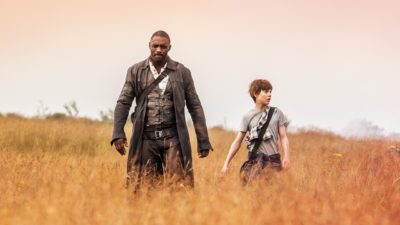
So, if King’s writing output has remained essentially steady the last few decades — he produces around a book a year, sometimes more — and movies based on his works come out every few years why does 2017 feel different? Why does 2017 feel like it’s the year of Stephen King?
I think it’s because while King’s had a lot of his works turned into movies since the late 1970s, 2017 seems like it’s the first time those movies are top of the line, big-budget films meant for everyday filmgoers rather than those who’d go see a Stephen King horror movie no matter what. It kind’a feels like when comic book movies made the jump from movies only fans of comic books would see to movies anyone would see that appealed to a wide range of people.

Out in theaters this summer is the first film of The Dark Tower saga August 4. This movie that’s based on a series of eight books takes place in a weird realm where old-west style gunslingers do battle with wizards more at home in something like The Lord of the Rings than The Good, the Bad and the Ugly. Starring Matthew McConaughey and Idris Elba, if this first film is successful The Dark Tower will be to Sony what Harry Potter was to Warner Brothers — a long-running film series that will be the basis for all sorts of ancillary moneymaking things from Halloween costumes to theme park rides.
Then, a little more than a month after the release of The Dark Tower on September 8 comes It that’s the first movie of two based on the 1986 novel of the same name. Already made as a movie-of-the-week back in 1990, this new It is based on the first part of the book where a group of kids, the film takes place in the mid–1980s, must do battle with an evil presence living under their town that kills children. The It sequel due at some point in the future would deal with the kids as adults present day who must go back to their town and finish the job when the killings start again.
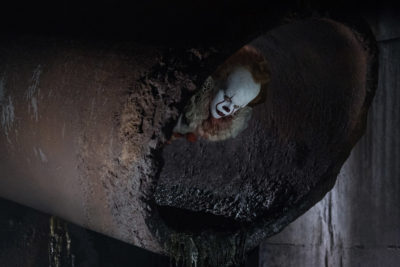
If The Dark Tower and It are successful I can only imagine that there’ll be a rush to turn all sorts of King works into movies since he’s got such a back-catalog of classics. And I’d also assume that much like with Marvel and DC other authors in the same vein as King will start getting their works turned into big-budget films as well. But there’s always a chance these two King movies could flop meaning that his movies would one again be relegated to low-budget flicks at best, direct to streaming at worst.
What I find most interesting here is that the The Dark Tower and It movies couldn’t be more different to one and other. One’s a fantasy flick with six-shooters and the other a horror movie with a monster so scary I think there’s an argument to be made that the titular “It” which in its human form looks like a clown scared a generation of kids so badly that they now have a phobia of them. The idea that these two separate works are both being released into theaters around the same time and both movies have a great chance at starting multi-billion dollar film franchises, means that the works of Stephen King might just about to be elevated from simple genera movies that a generation ago were more at home on VHS than movie theaters, to something more. Something more along the lines of serious films — scary clowns and all.
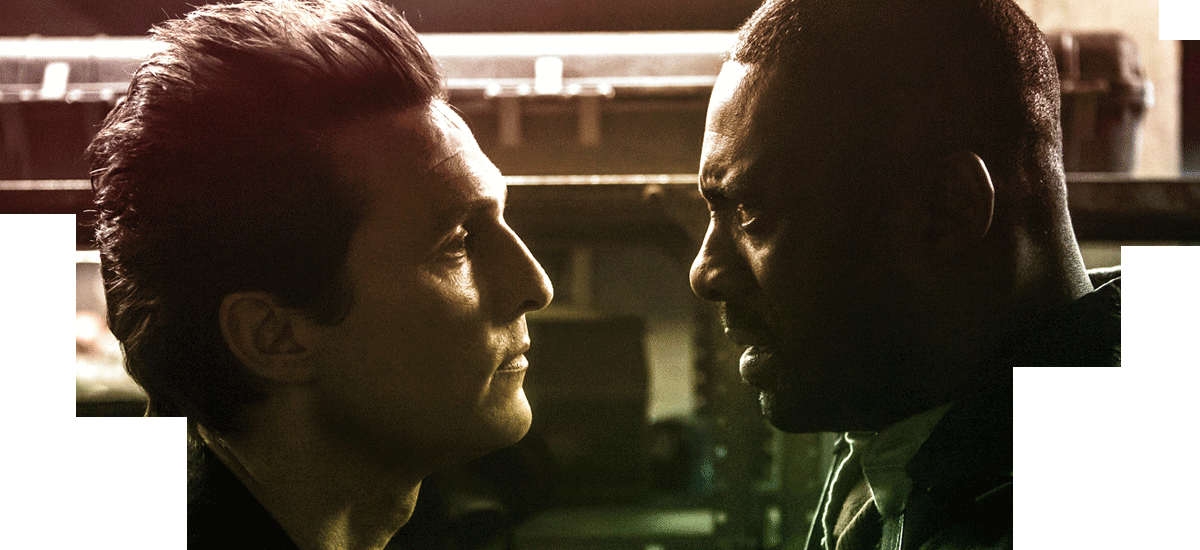
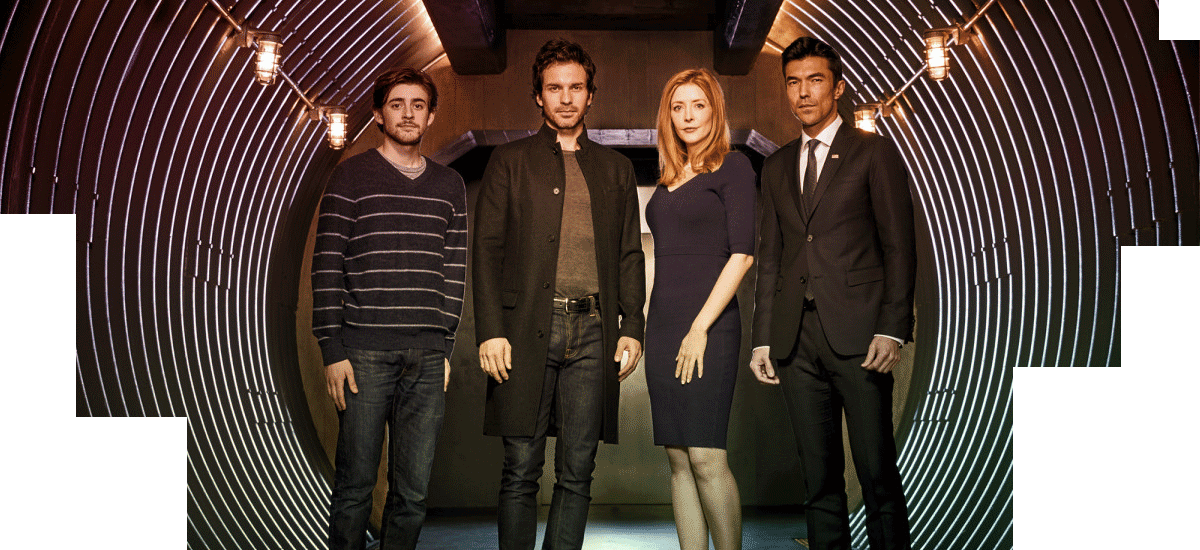
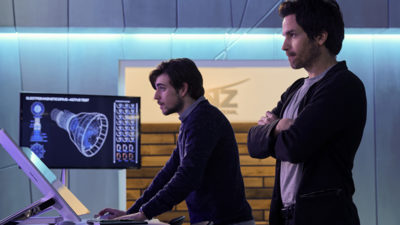 But still, while I might be interested in Salvation it is on CBS which doesn’t have a good track record of interesting sci-fi series with the likes of Under the Dome, Extant and Zoo all being dull and lowest-common denominator sci-fi the last few years. But regardless of what had come before I was going to check out Salvation no matter what. Unfortunately, not unexpectedly, Salvation is more Under the Dome than Deep Impact.
But still, while I might be interested in Salvation it is on CBS which doesn’t have a good track record of interesting sci-fi series with the likes of Under the Dome, Extant and Zoo all being dull and lowest-common denominator sci-fi the last few years. But regardless of what had come before I was going to check out Salvation no matter what. Unfortunately, not unexpectedly, Salvation is more Under the Dome than Deep Impact.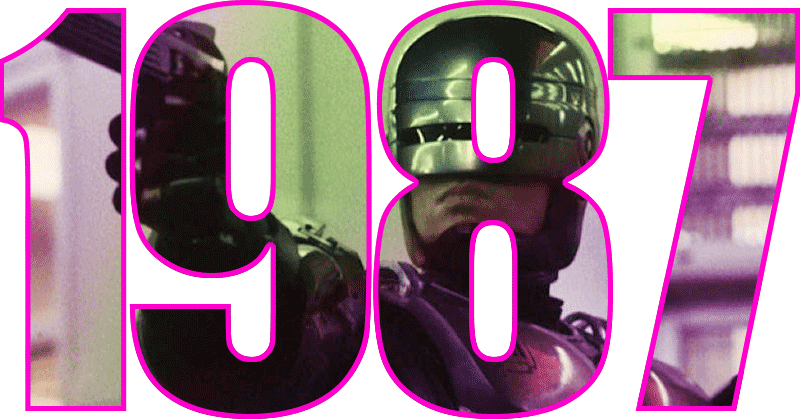
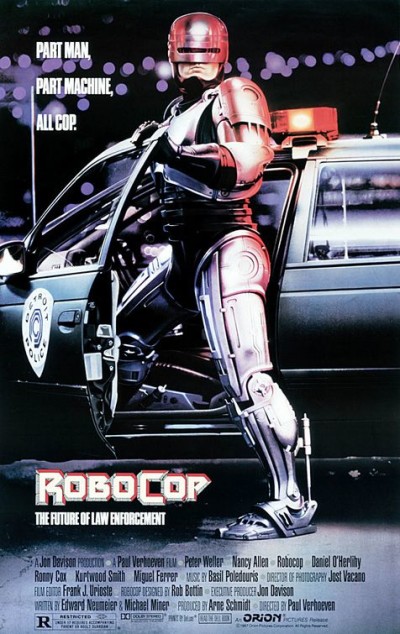 One of the articles I read talked about Aliens that was longer and had additional scenes, The Abyss with a totally different ending than what got released in theaters and a gorier version of RoboCop.
One of the articles I read talked about Aliens that was longer and had additional scenes, The Abyss with a totally different ending than what got released in theaters and a gorier version of RoboCop.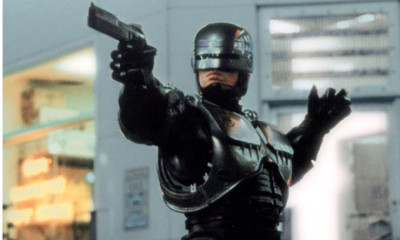
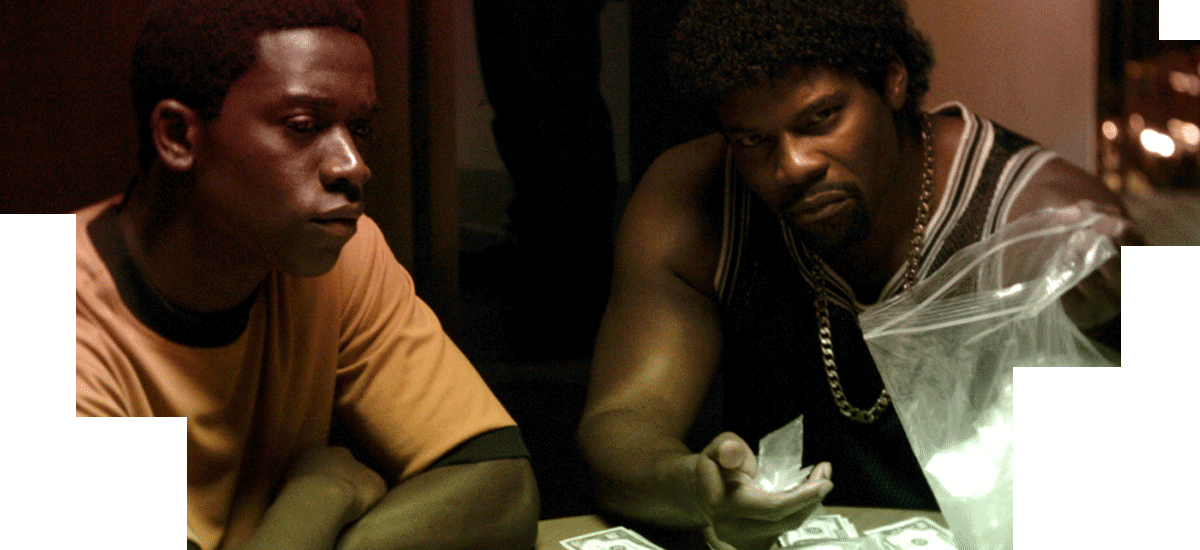
 While the O.J. series grabbed me right away, Snowfall on the other hand, hadn’t yet grabbed me by the end of the first episode.
While the O.J. series grabbed me right away, Snowfall on the other hand, hadn’t yet grabbed me by the end of the first episode.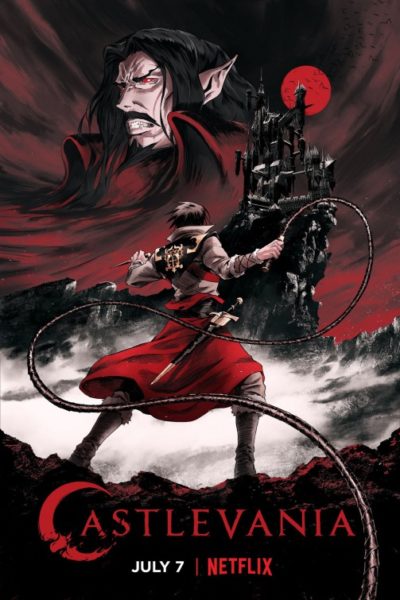 When Netflix announced a series based on the classic game Castlevania I was suspect since I can’t readily think of any video game inspired movie or series that was any good, and surly this new series couldn’t be any good either. That was until I read who was involved in the series; writer Warren Ellis.
When Netflix announced a series based on the classic game Castlevania I was suspect since I can’t readily think of any video game inspired movie or series that was any good, and surly this new series couldn’t be any good either. That was until I read who was involved in the series; writer Warren Ellis.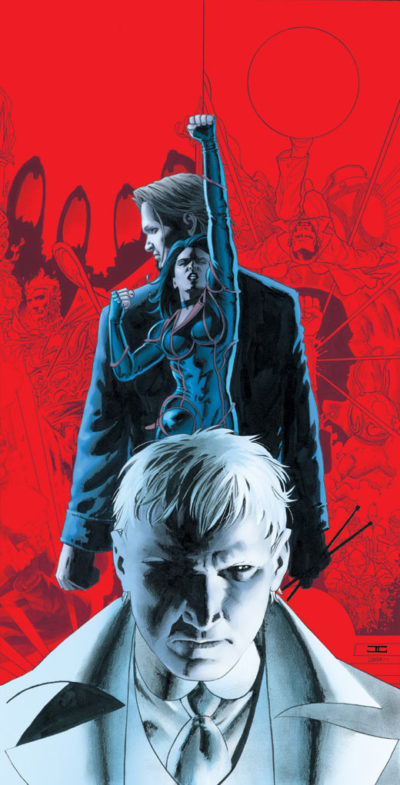


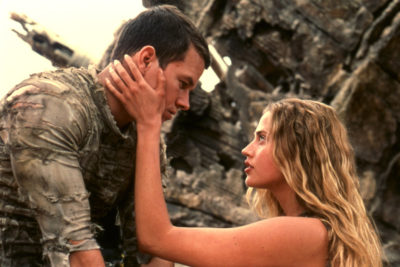 While the most recent Apes movies are sort of reverse sequels/not quite prequels to the original 1960s and 1970s movies, Burton’s Planet of the Apes is a remake of the original film. There were attempts at rebooting the Apes franchise in the 1980s and 1990s, the most famous example of which would have starred Arnold Schwarzenegger in the title role with Oliver Stone, yes, that Oliver Stone, directing. But for whatever reason it wasn’t until 2001 and Burton’s film that the apes would return to the big screen.
While the most recent Apes movies are sort of reverse sequels/not quite prequels to the original 1960s and 1970s movies, Burton’s Planet of the Apes is a remake of the original film. There were attempts at rebooting the Apes franchise in the 1980s and 1990s, the most famous example of which would have starred Arnold Schwarzenegger in the title role with Oliver Stone, yes, that Oliver Stone, directing. But for whatever reason it wasn’t until 2001 and Burton’s film that the apes would return to the big screen.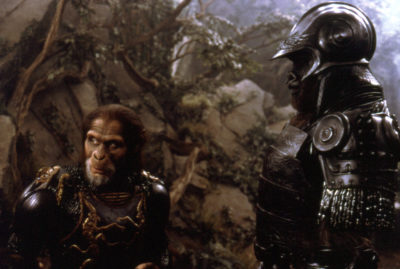 Honestly, Burton isn’t given enough credit these days for the films that he’s directed. Or, at the very least, he’ll be a director when we one day look back at his career and tremble at how good it was and how little respect he got for his work when it was released.
Honestly, Burton isn’t given enough credit these days for the films that he’s directed. Or, at the very least, he’ll be a director when we one day look back at his career and tremble at how good it was and how little respect he got for his work when it was released.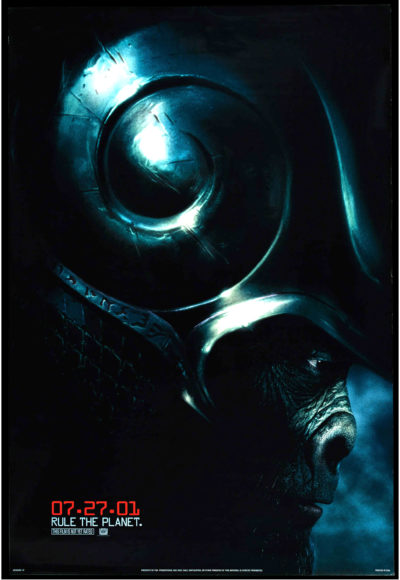 Now, Planet of the Apes isn’t Burton’s best movie, but it’s still a solid film. Plus, mostly known as a horror director, it’s one of only two sci-fi movies Burton has directed, the other being Mars Attacks. For that reason alone I think fans of the genera should have a special place in their hearts for this film. Burton’s Planet of the Apes has all his weird and wonderful stylings from the design of the apes costumes and villages to the weird and wonderful headgear the apes wear in this film.
Now, Planet of the Apes isn’t Burton’s best movie, but it’s still a solid film. Plus, mostly known as a horror director, it’s one of only two sci-fi movies Burton has directed, the other being Mars Attacks. For that reason alone I think fans of the genera should have a special place in their hearts for this film. Burton’s Planet of the Apes has all his weird and wonderful stylings from the design of the apes costumes and villages to the weird and wonderful headgear the apes wear in this film.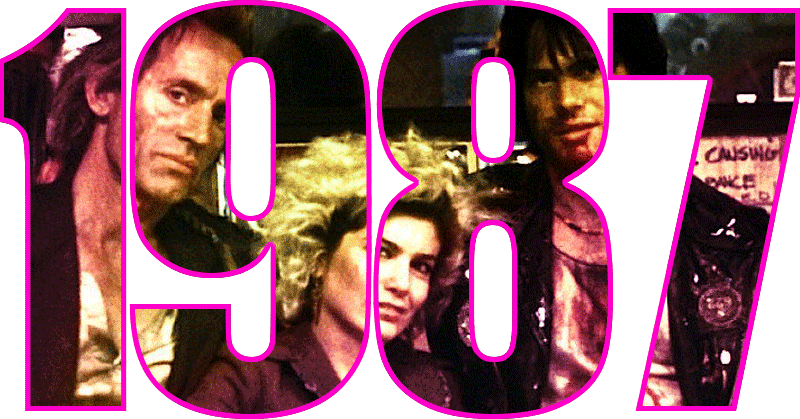
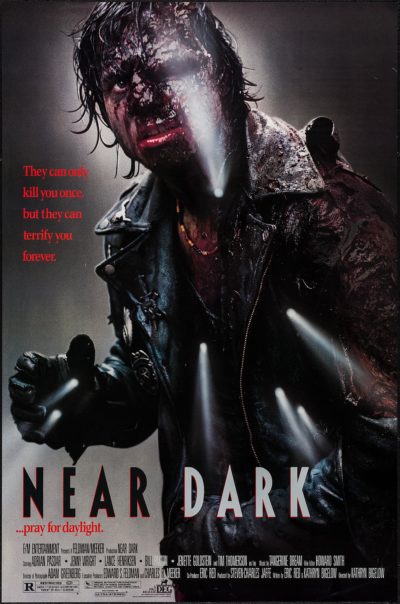 And while I’m a sucker for 1980s gory horror movies, I’m don’t think that Near Dark has stood the test of time the last 30 years. But I will say that two scenes in Near Dark* alone make it worth checking out that movie today.
And while I’m a sucker for 1980s gory horror movies, I’m don’t think that Near Dark has stood the test of time the last 30 years. But I will say that two scenes in Near Dark* alone make it worth checking out that movie today. The crux of the movie is even though Caleb’s been turned to a vampire, he’s not yet a member of Jesse’s family until he’s killed someone on his own. And because the vampires need to feed is like a junkie’s need to get a fix, it’s all Caleb can do to not act on his impulses and end someone’s life for a little blood and cross over to the dark side.
The crux of the movie is even though Caleb’s been turned to a vampire, he’s not yet a member of Jesse’s family until he’s killed someone on his own. And because the vampires need to feed is like a junkie’s need to get a fix, it’s all Caleb can do to not act on his impulses and end someone’s life for a little blood and cross over to the dark side.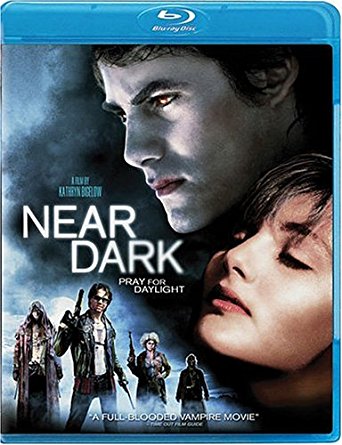 The other scene is of a gunfight in a motel after the bar scene. Here, one of the patrons escaped the bar and has brought the police to the vampire’s room. The family aren’t scared of the cops and their guns, but what they are scared of is that the police have arrived during the day and daylight hurts them. So there’s this big shoot-out and the cops are shooting into the room and the family out. Bullets hurt the vampires but can’t kill them. What really hurts the vampires are the shafts of sunlight that’s let into the room from all the bullet-holes in the walls. These shafts hit harder than any bullet and hurt worse than any rifle shot. And at one point Caleb has to run out of the room to get the group’s car and catches fire before he’s able to get back into the shade and put himself out. Since he’s a vampire the burns hurt, but they go away.
The other scene is of a gunfight in a motel after the bar scene. Here, one of the patrons escaped the bar and has brought the police to the vampire’s room. The family aren’t scared of the cops and their guns, but what they are scared of is that the police have arrived during the day and daylight hurts them. So there’s this big shoot-out and the cops are shooting into the room and the family out. Bullets hurt the vampires but can’t kill them. What really hurts the vampires are the shafts of sunlight that’s let into the room from all the bullet-holes in the walls. These shafts hit harder than any bullet and hurt worse than any rifle shot. And at one point Caleb has to run out of the room to get the group’s car and catches fire before he’s able to get back into the shade and put himself out. Since he’s a vampire the burns hurt, but they go away.